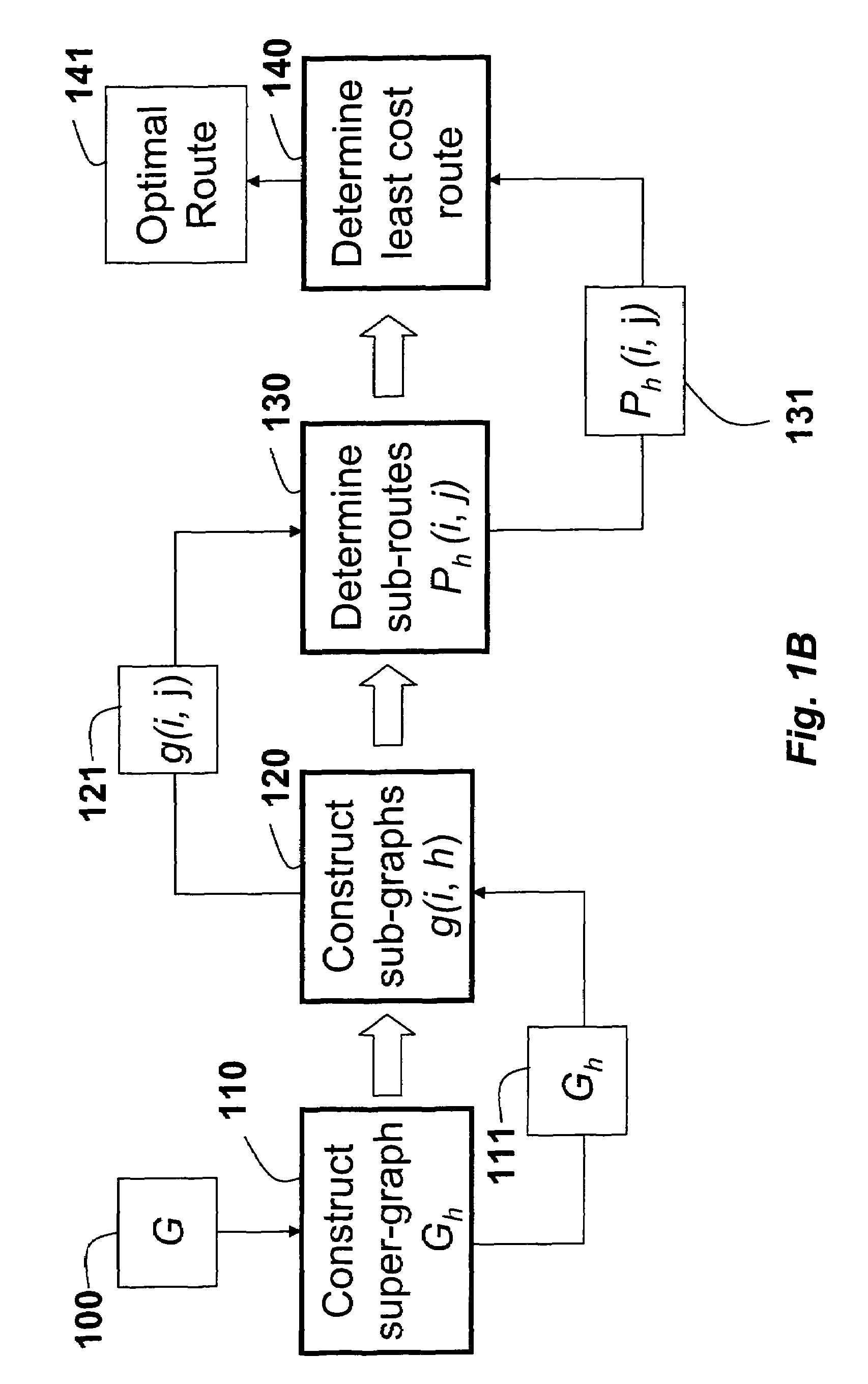Decentralized and dynamic route selection in cooperative relay networks
a cooperative relay and dynamic route technology, applied in data switching networks, frequency-division multiplexes, high-level techniques, etc., can solve the problem of np-hard problem of finding the optimal cooperative rou
- Summary
- Abstract
- Description
- Claims
- Application Information
AI Technical Summary
Benefits of technology
Problems solved by technology
Method used
Image
Examples
Embodiment Construction
[0027]As shown in FIG. 1A, a topology of a cooperative relay network 100 according to an embodiment of the invention can be represented as a graph. Herein, graphs are only used to simplify and clarify the description of the invention. It should be understood that the graph is not an essential component of the invention, and that the invention can be worked without the use of the graphs.
[0028]The network 100 includes a source (S) node 101, a set of relay (R) nodes 102, and a destination (D) node 103. The nodes can transmit packets (p) 104 via wireless communication channels (C) 105. In the graph, the channels are represented as links or ‘edges’ between the nodes. As used herein, the transmission can be one of two possible modes, a broadcast mode and a beamform mode. It must be understood that this does not limit the possibility of using other transmission modes. For example, cooperative space-time coded transmission may also be used.
[0029]The embodiments of the invention provide a sy...
PUM
 Login to View More
Login to View More Abstract
Description
Claims
Application Information
 Login to View More
Login to View More - R&D
- Intellectual Property
- Life Sciences
- Materials
- Tech Scout
- Unparalleled Data Quality
- Higher Quality Content
- 60% Fewer Hallucinations
Browse by: Latest US Patents, China's latest patents, Technical Efficacy Thesaurus, Application Domain, Technology Topic, Popular Technical Reports.
© 2025 PatSnap. All rights reserved.Legal|Privacy policy|Modern Slavery Act Transparency Statement|Sitemap|About US| Contact US: help@patsnap.com



